The Uganda Bureau of Statistics (UBOS), in collaboration with the World Bank’s Living Standards Measurement Study (LSMS) program and the Poverty and Equity Global Practice, disseminated the microdata and results from the first round of the Uganda High-Frequency Phone Survey on COVID-19 (UHFPS) on August 18, 2020. The financing for data collection and technical assistance in support of the Uganda HFPS COVID-19 is provided by the World Bank and the United States Agency for International Development (USAID).
The UHFPS was launched in June 2020 to track the socio-economic impacts of the pandemic in Uganda on a monthly basis for a period of 12 months. The first round of the survey was conducted during the period of June 3-16 and aimed to recontact the entire sample of households that had been interviewed during the Uganda National Panel Survey (UNPS) 2019/20 round and that had phone numbers for at least one household member or a reference individual. Of the 2,421 households that were attempted to be interviewed, 2,259 were successfully interviewed, representing 93% of the initial target sample. Gender distribution of the respondents was close to parity.
Selected findings from Round 1
Knowledge of COVID-19 symptoms is far from universal and knowledge of some symptoms is correlated with education level. The most frequent COVID-19 symptoms such as dry cough, fever and shortness of breath were in fact not mentioned by all respondents. 83% of respondents reported dry cough to be a COVID-19 symptom, and there were no significant differences in reporting by the level of respondent’s education. On the other hand, while fever was mentioned by 67% of respondents, the awareness of this symptom was significantly lower among those that never attended school (48%). Only 36% of respondents named shortness of breath as a COVID-19 symptom and almost nobody mentioned loss of smell or taste (4%).
Despite very high knowledge of preventive measures and almost universal self-declared prevalence of safe practices, large shares of respondents report false beliefs about COVID-19. The most striking findings are that 44% of respondents believe that coronavirus will not survive in warm weather; 38% believe that local herbs can help treating COVID-19 patients; 26% think that consumption of alcohol provides immunity to the disease; 22% are of the opinion that Africans are immune to COVID-19; and 16% do not think that children can be affected by COVID-19. Almost all false beliefs are strongly correlated with lower levels of education. Such a high level of false beliefs contradicts to very high shares of respondents (more than 95%) who claimed to have altered their behavior in favor of safe practices. Such discrepancy may be potentially related to the tendency among respondents to provide socially desirable answers, in this particular case related to adoption preventive measures.
Access to basic services and products differs across rural and urban area and was far from universal mostly driven by economic reasons. Respondents were asked about their households’ need and ability to buy soap, food items and medicine during the week preceding the survey, and access medical treatment since March. The lowest access was observed among those who needed to buy medicine with rural households being substantially worse off than urban ones. Rural households had also lower access to soap and medicine when needed. Access to soap was substantially lower among the poorest households based on pre-COVID-19 consumption level. Economic reasons such as lack of money or high prices were mentioned by absolute majority of respondents as main reasons for being unable to purchase respective products or services. Lack of transportation was mentioned as an important reason for not being able to access medical treatment by rural respondents.
School closures widened pre-existing inequalities in access to schooling in favor of urban residents and wealthier households. All schools were closed in Uganda on the 20th of March. Before the pandemic, distribution of households with any child age 3-18 enrolled in educational institutions were relatively equal across residence and pre-COVID-19 consumption quintiles. Overall, 92% of households with at least one child in the age group of 3-18 had at least one child enrolled in school prior to the closure of schools. After the closures, the share of households with any child attending any remote learning activity stood at 59% and was distributed very unequally. For example, it ranged from 44% among the poorest quintile to 74% among the richest quintile. There is also a statistically significant gap between rural and urban areas.
About 17% of respondents stopped working after COVID-19 outbreak, with larger share in urban areas and among the top 40% of the pre-COVID-19 consumption distribution. Even though the vast majority of the respondents were still working the week before the interview (70% on average), more than half of the non-working respondents stopped working after the restrictions put in place in response to the pandemic. Respondents in urban areas and those living in households in the top 40% of the pre-COVID-19 per adult equivalent consumption distribution suffered from job interruptions the most. At the national-level, among 90% of respondents that stopped working cited COVID-19-related reasons for job interruptions.
Work stoppage was the highest in sectors which entail the most personal interactions such as service, transport and commerce. Thus, 43% of respondents in the service sector (i.e. personal services) were no longer working during the last week preceding the survey interview. The comparable estimates were for those in the transport and commerce (i.e. buying and selling) sectors were 39% and 34%, respectively. Agriculture was the least impacted sector. Indeed, 93% of respondents in this sector kept working despite the anti-COVID-19 measures.
All prevalent income sources in Uganda were negatively affected since COVID-19 outbreak, with non-farm family businesses being affected the most and family farming affected the least. Figure 11 provides the shares of households receiving income from specific sources over the last 12 months. Figure 12 shows the reported change in income since March 20 by income source, conditional on having received income from that source over the last 12 months. 90% of households with non-farm family businesses suffered income losses (less or no earnings) subsequent to the COVID-19 outbreak. A contraction in transfers from-family within the country was observed among 83% of households that received this type of income in the last 12 months. The comparable incidence of income loss or no earnings was 65% among those that have received wage employment income in the last 12 months and 60% among households involved in farming.
If you are interested to learn more about findings from the first round of the Uganda High-Frequency Phone Survey please check out the brief here and the tabulations here. If you are interested in getting the microdata and the related documentation from the survey, it can be downloaded from here.
The members of the team working on the Uganda High-Frequency Phone Survey on COVID-19 (listed in alphabetical order for each institution) are: UBOS: Danstan Aguta, Henry Mubiru, Andrew Mupere, Vincent Ssennono; World Bank: Aziz Atamanov (Poverty and Equity GP), John Ilukor (LSMS), Talip Kilic (LSMS), Giulia Ponzini, and Nobuo Yoshida (Poverty and Equity GP).

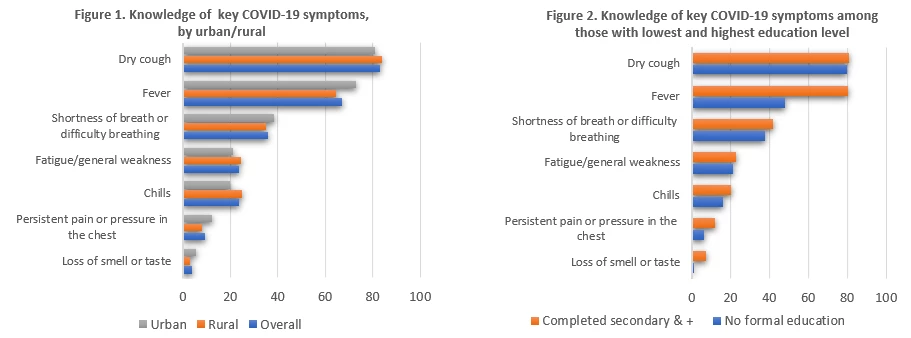
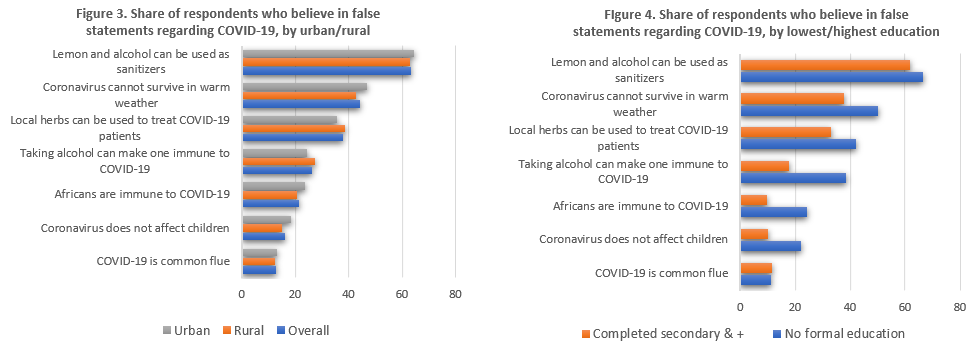
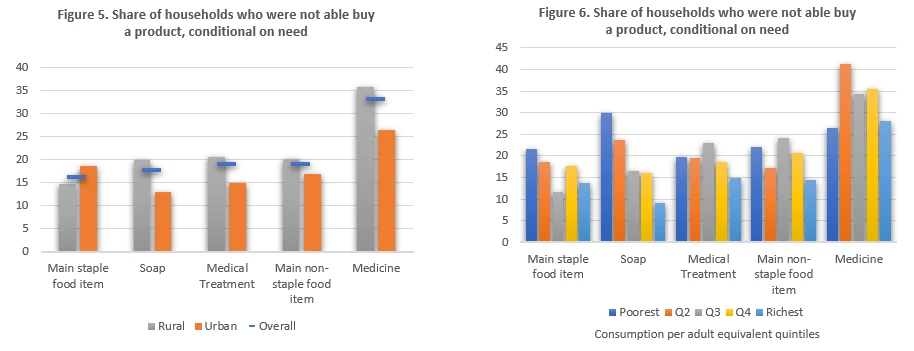
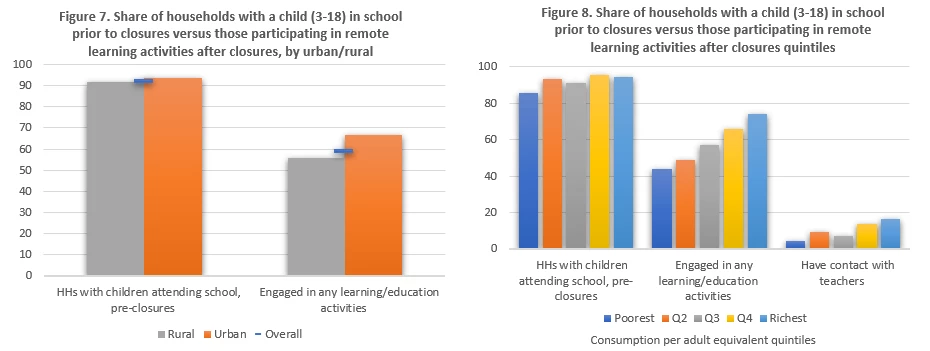
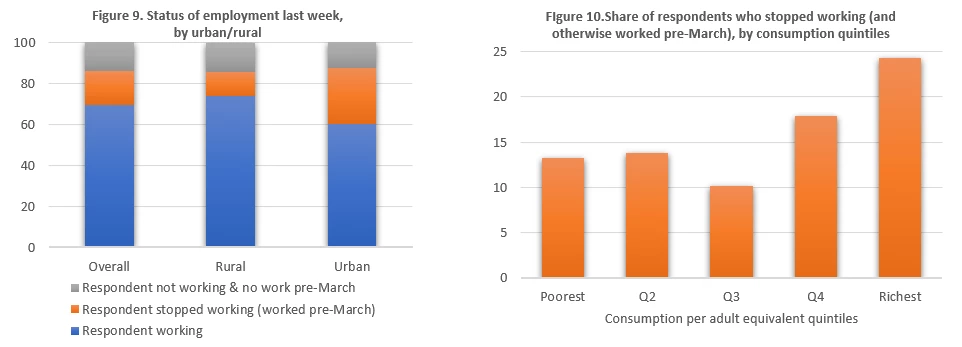
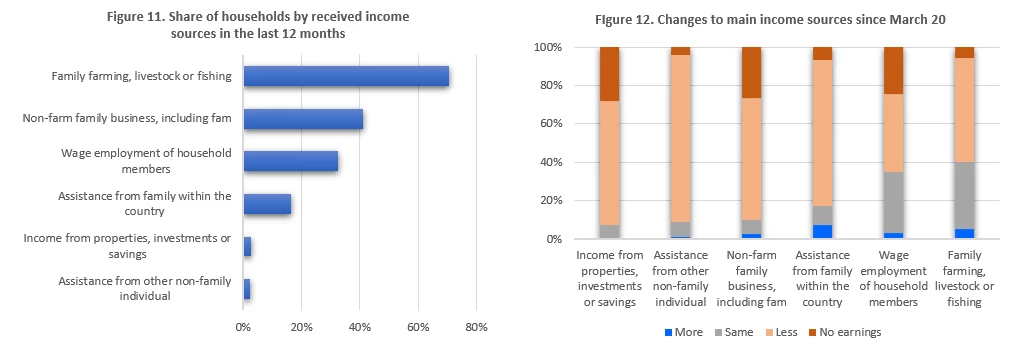


Join the Conversation